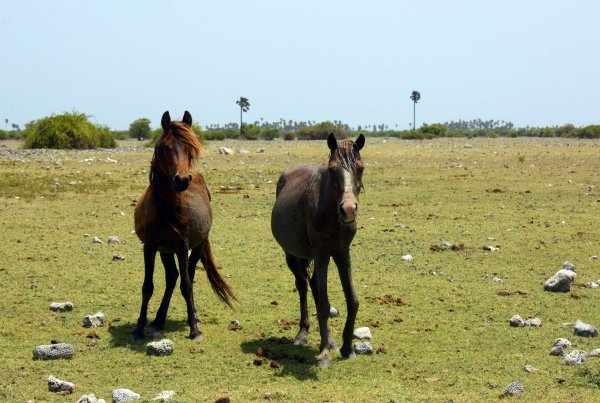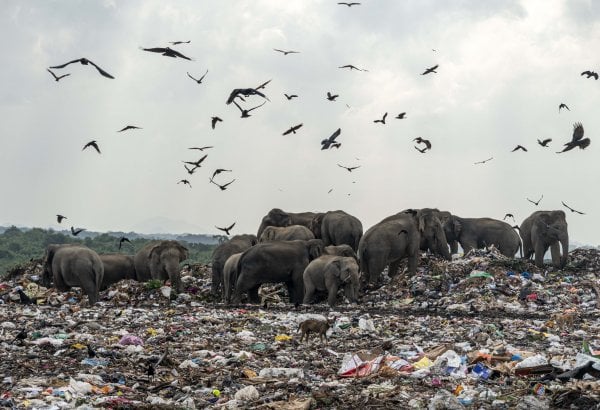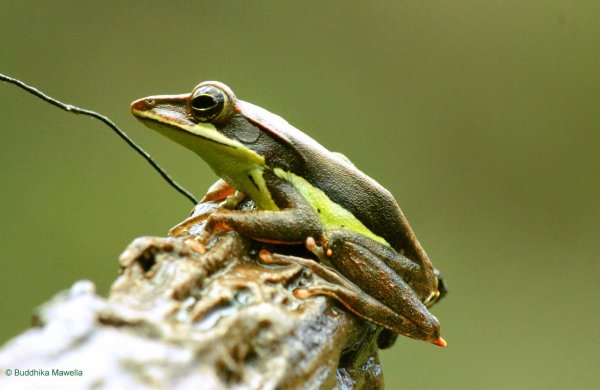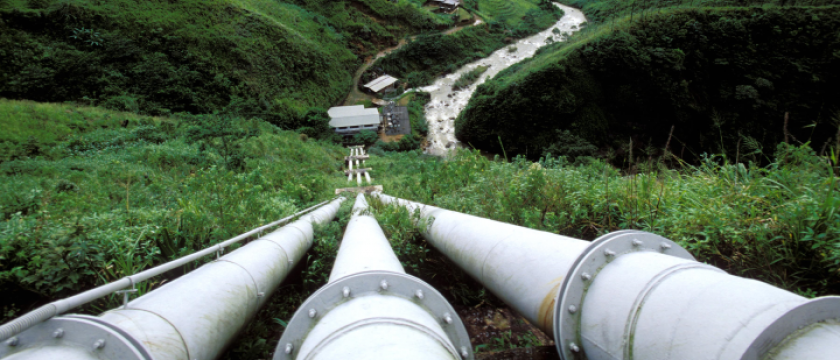
The world seems to have enthusiastically embraced the idea of renewable energy sources that minimise or negate the emission of carbon dioxide; and about time, too, given the environmental effects of burning fossil fuels.
Sri Lanka, being a tropical country, can undoubtedly benefit from renewable energy sources, with the larger focus on hydro potential. The geo-climatic settings in Sri Lanka are conducive to strapping hydro resources. The South West and North West monsoons assuring a healthy rainfall throughout the year offer the excellent prospect for hydro power generation. Mini hydros, in particular, are a rising trend, the development of which, according to the Sustainable Energy Authority, “is widely considered to be a success story.”
However, every initiative has its pros and cons, and despite talk of clean energy many concerns have been raised, particularly by environmentalists.
Mini Hydros: Success and Concerns
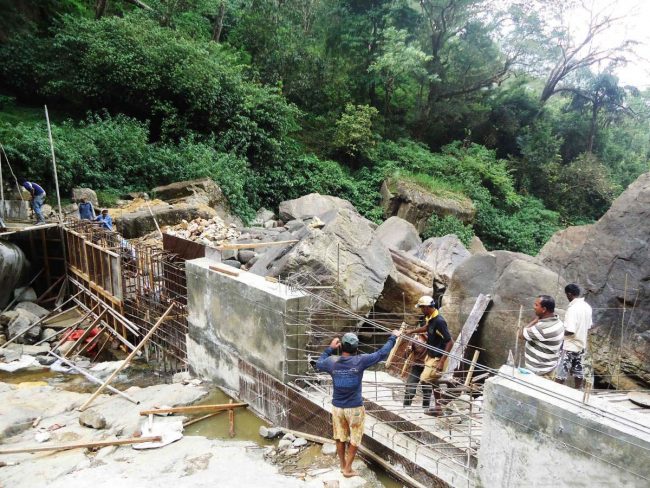
Given that some parts of Sri Lanka experience frequent rainfall, mini hydros are considered a great source of energy (and income generation). Image courtesy: thermoteceng.com
The term ‘mini hydro power plants’ refers to hydro power plants with a capacity below 10 MW, according to the UNIDO (United Nations Industrial Development Organization) classification.
Another way of classifying mini hydro power plants is based on their functioning in relation to the method of water intake and storage.
To begin with, Sri Lanka is blessed with constant rainfall, especially in the central hills, which allows the rivers and streams to have an abundant flow of water unless struck by severe droughts. This, in return, is made use of to produce energy to meet the growing energy requirement. Where socio-economic benefits are concerned, mini hydro plants provide more opportunities to generate income using the available power. As for environmental benefits, mini hydros reduce the use of fossil fuels as green technology is believed to generate no greenhouse gases or heat.
However, the destruction caused to the environment in terms of flora and fauna cannot be cast off when evaluating whether or not mini hydro plants are in fact a success.
During the first two months of 2016 the Board of Investment (BOI) signed agreements with investors to set up five mini hydro plants in the Ratnapura, Haldummulla, Matale, and Hali Ela areas, with the total investment being USD 18 million.
According to Hemantha Withanage, Executive Director of the Centre for Environmental Justice, about 137 mini hydro plants are already in operation and another 43 are under construction.
How They Work
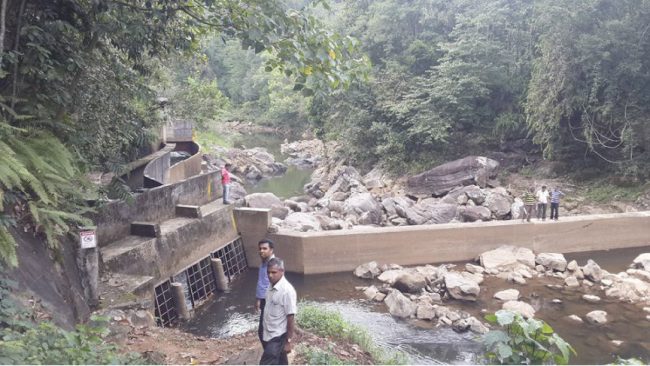
Steep rivers offer good potential for mini hydros, but failure to adhere to set standards when carrying out projects has resulted in parts of some rivers going dry in areas like Erathne and Morakanda. Image courtesy: hemanthawithanage.blogspot.com
The best geographical areas for exploiting small-scale hydro potential are those where there are steep rivers flowing all year round. To assess the suitability of a potential site, the hydrology of the site needs to be known and a site survey has to be carried out, to determine actual flow and head data.
The projects require Initial Environmental Evaluations (IEE). However, the majority assessments are conducted without taking into account expert opinions on aspects like suitable project locations and other environmental impacts. These projects are then granted approval by the Central Environment Authority (CEA), Withanage said.
A mini hydro plant operates by having water in a river diverted to a powerhouse by means of a dam built across the flow. However, not all water can be diverted, and according to the requirements, some water has to be left not to disturb the natural flow. Yet, due to non-adherence to these requirements, almost two kilometres of certain rivers have gone dry in areas like Erathne and Morakanda, he said.
A High Cost To Nature
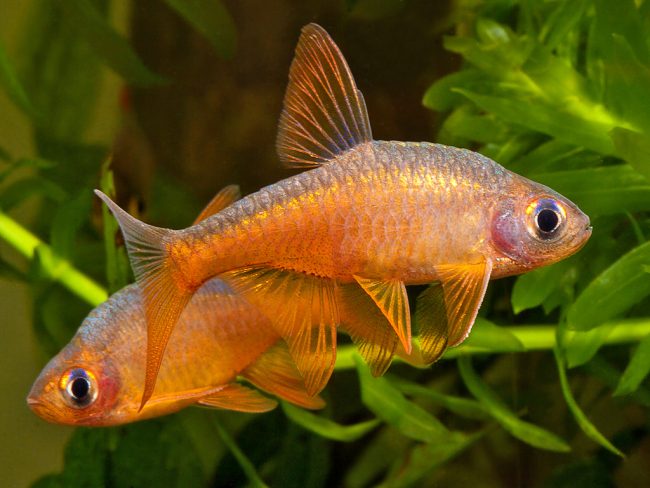
The Halmal Dandiya, an endemic species which could face threats due to mini hydros in Athwelthota. Image courtesy: freshwaterfishersofsrilanka.blogspot.com/ Chathuranga Mullegama
As much as they are said to generate clean energy, mini hydro plants also cause high levels of destruction to the rich ecosystems. Mini hydro plants block water sources and pose threats of extinction to many species of flora and fauna, some of which are point endemic.
One of the worst affected areas is Athwelthota in the Kalutara District, which is a unique habitat for freshwater fish. The area is believed to be home to nearly 32 varieties of fish out of many are endemic, while two species are recognised as point endemic, like the Halmal Dandiya.
Sometimes even a slight habitat change is detrimental to the fauna. Certain fish species have not shown signs of healthy adaptation to the changed flow of water like the Gal Pandiya, which lives in fast-flowing deep waters.
The disturbed flow of water also affects fish migration, about which the authorities granting approval for mini hydro plants aren’t aware of, Withanage said. The construction of a dam on a river can block or delay upstream fish migration and thus contribute to the decline and even the extinction of species that depend on migration during certain phases of their life cycle. Fish usually migrate either to reproduce or to feed. Construction of dams disturbing the natural habitat can be critical to the sustainability of fish population, particularly threatening the anadromous species.
Two other major affected areas due to untenable plants are Anda Dola in the Dellawa forest and the plant at Koskulana in the northern Sinharaja buffer zone. Due to the power plant, over five kilometres of Anda Dola is in danger of drying up owing to the diversion of water into another rivulet.
As pointed out by Withanage, nearly 150 small waterfalls like Watawala and Gilimale falls have disappeared due to mini hydro setups. Seven waterfalls, including Handagiriya Ella, Anda Dola, Broadlands, Alupotha, and many others, are on the verge of disappearing.
Environmentalists As A Collective
Vehement opposition to the mini hydro initiative has been voiced by environmentalists, that it has almost escalated to a raging conflict to save the remnants of biodiversity. The damage caused by construction on stream beds and the surroundings are permanent, hence the ongoing constructions have to be immediately halted, Withanage said. In fact, he is of the view that the operations of all mini hydro initiatives should be discontinued. Many countries have abandoned the initiative due to the lasting damage.
He also said that rather than fighting against individual projects, environmentalists should get together and fight against the possibility of environmental destruction in the long run.
Are Mini Hydro Plants Economically Viable?
According to Withanage, the mini hydro initiative is only profitable for the private investors who sell a unit of electricity to the Ceylon Electricity Board (CEB) at an exorbitant price.
While the CEB pays less than Rs. 2 per unit of electricity generated via mega hydro plants, they have to pay Rs. 18 per unit generated by mini hydro plants. The consumers of the end product, too, are indirectly penalised due to the high costs incurred purchasing the power generated by mini hydro initiatives. The CEB has no control over the mini hydro plants but is compelled to buy all the units added to the national grid, he said.
Using Alternative Energy Sources
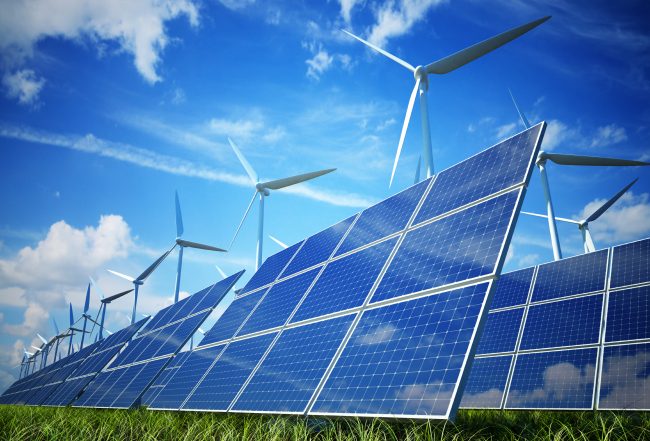
Sri Lanka should consider alternative means of energy generation, too. Image courtesy: huffingtonpost.com
While the demand for electricity is, without doubt, escalating, Sri Lanka also has the advantage of massive sources of energy being available naturally in the environment. Solar energy, wind power, and tidal waves in particular, should be harnessed to feed more energy into power grids. While energy in its raw form is abundantly available, the technology to set up plants requires a substantial investment. According to Withanage, if the Sri Lankan Government is keen on investing in the infrastructure, within a few years, the generation of energy can be done almost at a zero cost.
According to the Ministry of Power and Energy’s Sri Lanka Energy Sector Development Plan for a Knowledge-based Economy, 2015 – 2025, the strategies to develop the renewable energy portfolio to an optimum level include establishing a competitive bidding process for large-scale wind and solar power generation projects, integrating the environmental protection and climate change issues with the energy sector development plans, and many more initiatives.
Sri Lanka has a massive potential for energy tapping, but the success depends on state sponsorship, without which the suggested initiatives will be restricted to mere proposals.
Featured image courtesy engineersaustralia.org.au

